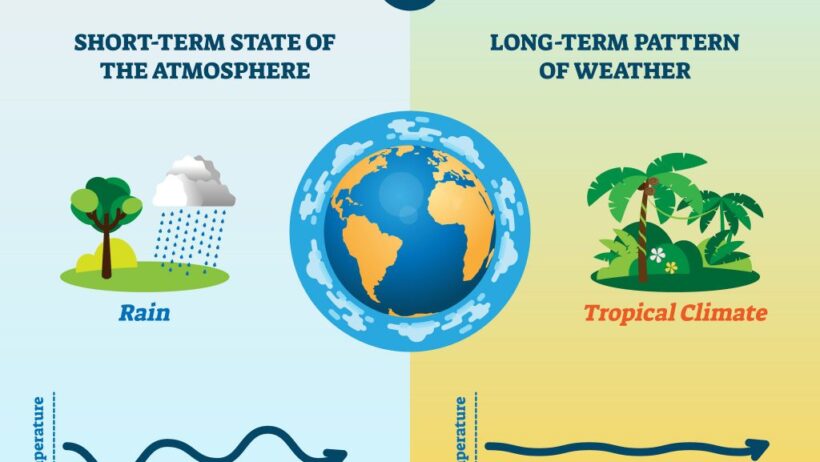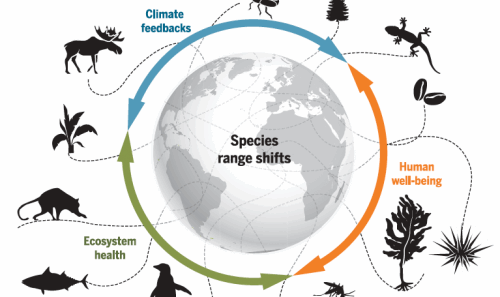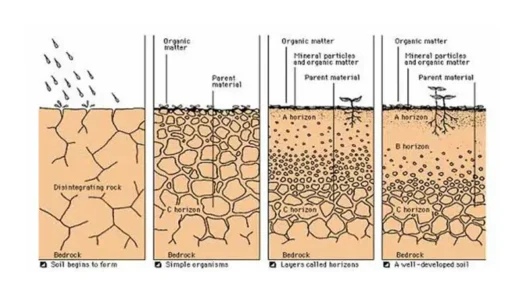The realms of weather and climate often evoke a perplexing dichotomy, akin to the brushstrokes of a painter where the vivid flecks of color harmoniously merge with broader strokes to craft an enveloping landscape. Just as a single brushstroke may reflect an artist’s immediate inspiration, so too do weather and climate encapsulate differing temporal perspectives of our atmospheric environment. As meteorological phenomena, they intertwine and diverge in ways that reveal the interconnectedness of the natural world.
At first glance, weather and climate appear to be fundamentally distinct entities. Weather refers to the transient atmospheric conditions that we experience on a daily basis—a fleeting glance into the sky that fluctuates with the whims of nature. In stark contrast, climate encompasses the long-term patterns and averages that emerge from these weather variances, composing a richer, more comprehensive narrative of a region’s atmospheric behavior over time. This difference, while pronounced, is rife with similarities that merit exploration.
Both weather and climate stem from the same foundational elements: the sun’s radiant energy, atmospheric conditions, and oceanic tides. They are kin, if you will, born from the same cosmic cradle, with one providing immediate glimpses and the other offering a panoramic overview. Imagine a tree—the weather represents individual leaves fluttering in the wind, while the climate stands as the sturdy trunk that supports the overall structure through seasons. In essence, they offer a dual perspective on the same reality, where understanding one enhances our knowledge of the other.
Moreover, both phenomena are inextricably linked to energy transformations. Weather is driven by the localized shifts in the Earth’s energy balance, influenced by factors such as humidity, temperature, and wind patterns. This interplay generates the chaotic and dynamic fluctuations we associate with rain showers, thunderstorms, and swirling winds. In contrast, climate operates on a global scale, shaped by energy exchanges throughout the planet. These exchanges mold long-term trends, engendering changes that can alter the very fabric of the Earth’s ecological tapestry.
In our quest to decipher the intricate dance between weather and climate, one finds parallels reminiscent of the art of storytelling. Just as a compelling story weaves together different plots and characters, the interplay of weather and climate weaves together numerous atmospheric stories unfolding across vast geographies. Each rainstorm serves as a chapter, contributing to an epic narrative that unfolds over the epochs.
A salient point of connection is the concept of extreme events. Both weather and climate give birth to extremes—what we often refer to as outliers in statistical analysis. Weather presents these extremes in sudden bursts: torrential downpours, blistering heatwaves, and fierce blizzards emerge as visceral experiences that leave a lasting imprint on our physical environment and emotional psyches. Climate, meanwhile, encapsulates the slow-burning crescendo of these extremes, manifesting in trends such as rising sea levels or prolonged droughts. This duality invites a closer examination of our vulnerabilities, as we navigate the immediate impacts of severe weather in tandem with the overarching consequences of climate change.
Understanding the similarities between weather and climate is crucial for interpretation and communication. Traditionally, weather forecasts are predominantly concerned with short-term predictions, offering snapshots of atmospheric conditions for the coming days. These forecasts are like fleeting glimpses of the larger cosmic symphony, allowing people to prepare for any immediate atmospheric shifts. Conversely, climate projections use historical data and sophisticated models to predict long-term atmospheric patterns, shaping our strategies for dealing with environmental transformations over decades and centuries.
If we imagine the bold cast of characters in our atmospheric story, then meteorologists and climatologists serve as its narrators. They analyze and articulate the intricacies of weather events and climate trends, wielding tools and technologies that help demystify the capricious nature of our environment. This collaboration emphasizes the importance of interdisciplinary work; recognizing that effective communication of both urgent weather events and chronic climatic shifts can empower communities to respond better and adapt to these realities.
Our perception of weather often emphasizes immediacy, reflected in the popular aphorism, “If you don’t like the weather, wait a minute.” However, climate demands a more contemplative approach, urging us to engage with systemic changes instead of fleeting whims. This hints at a broader metaphor: consider the weather as the chorus of a symphony—vibrant and occasionally chaotic—whereas climate becomes the underlying melody that establishes harmony within the chaos. Recognizing this dualism fosters an understanding of the nuances that govern our experience of the earth’s atmosphere.
As we navigate the complexities of weather and climate, we are compelled to confront the implications these phenomena have on our world. From agricultural practices to disaster preparedness, the interrelation of immediate atmospheric phenomena and long-term climatic changes shapes myriad aspects of human life. The urgency of adapting to climate change, while remaining cognizant of daily weather patterns, punctuates the narrative we live within, urging us to adopt more sustainable behaviors and philosophies.
In conclusion, while weather and climate are primarily distinguished by their temporal scales, they are intrinsically linked through the energy cycles that shape our natural environment. Recognizing their similarities allows us to appreciate the exquisite mosaic of interactions that define our existence on this planet. As stewards of the earth, understanding this relationship enhances our ability to anticipate challenges and enact changes that pave the way for a sustainable future. By deciphering the interconnected tales of weather and climate, we equip ourselves with knowledge empowering us to advocate for a healthier planet.





